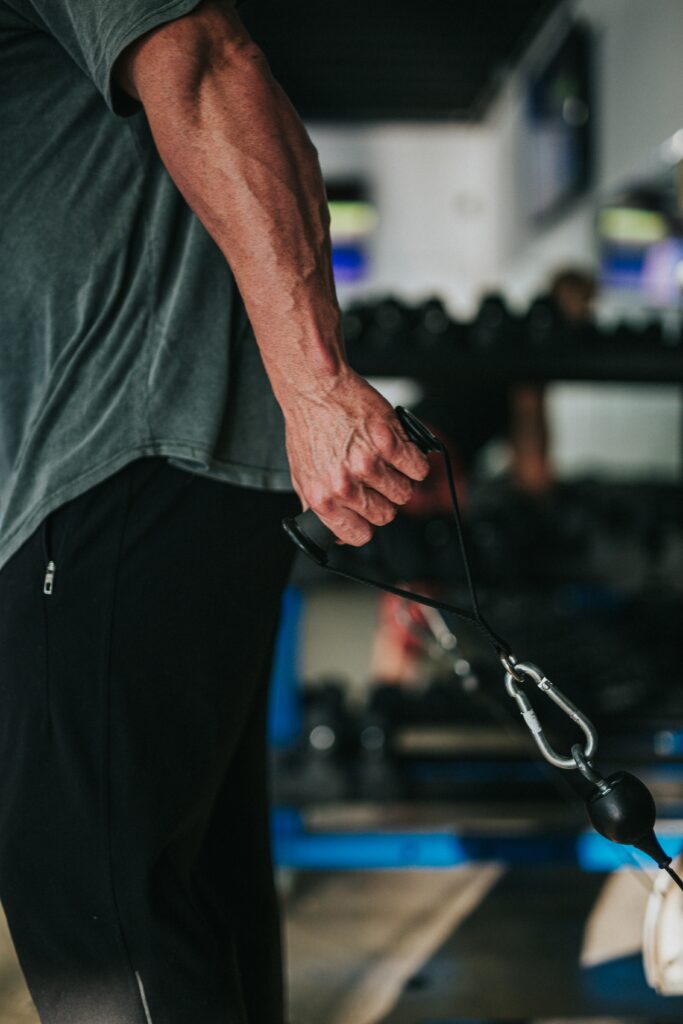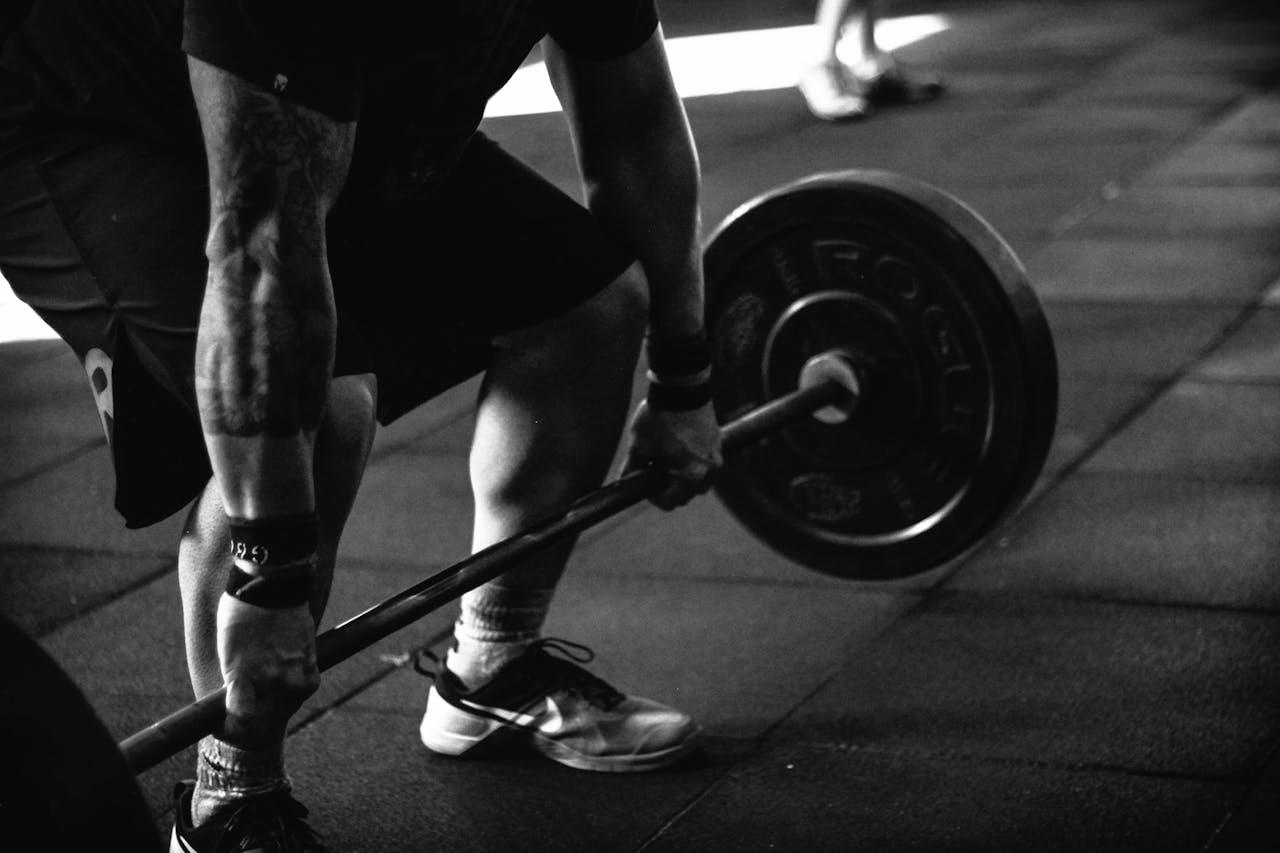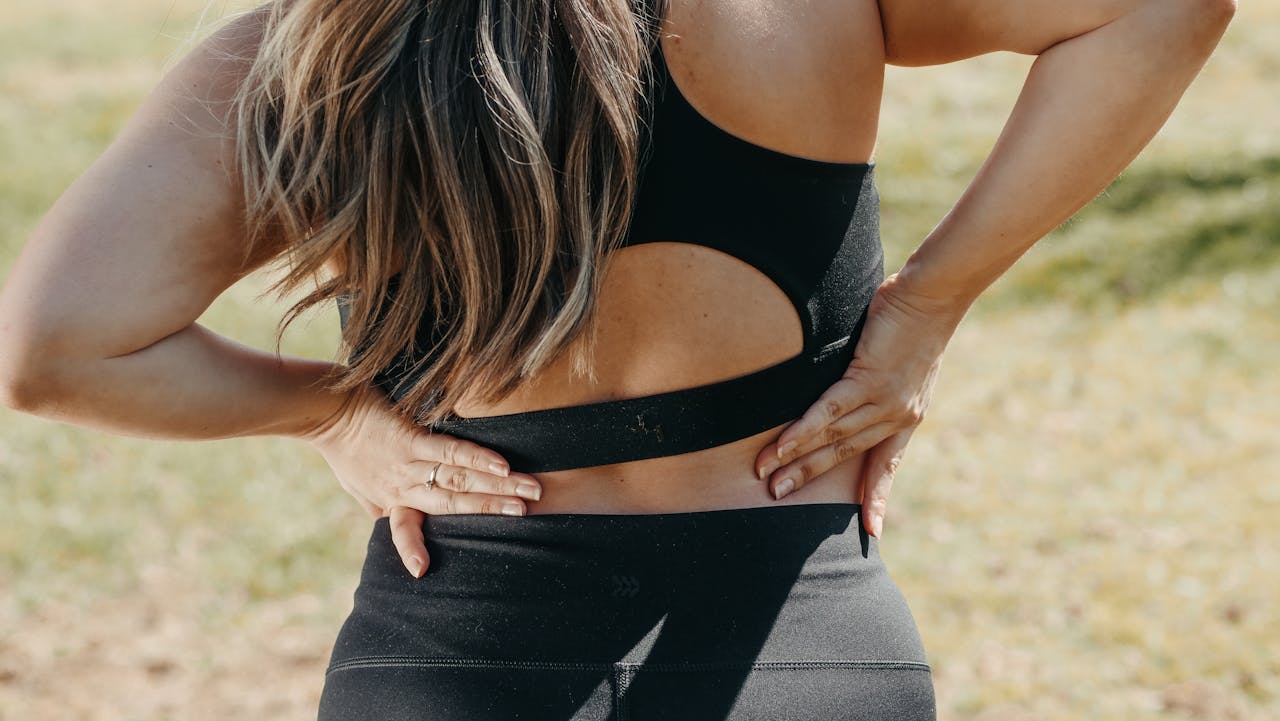Best Guide to Forearm Workouts: Top 5 Exercices For Beginners
Forearm workouts are a vital yet often neglected part of a fitness routine, especially for beginners focusing on building overall strength. The forearms play a key role in almost every upper body movement, from gripping weights in the gym to performing everyday tasks like carrying groceries or typing on a keyboard. Strengthening these muscles not only enhances your grip strength but also improves your performance in other exercises, prevents injuries, and contributes to a balanced, muscular physique.

Strong forearms are essential for athletes in sports like rock climbing, tennis, and weightlifting, where grip strength is crucial. Even outside of sports, powerful forearms can prevent common issues like wrist pain and carpal tunnel syndrome. By integrating forearm workouts into your routine, you can build a solid foundation for both fitness and functional strength. In this guide, we’ll cover everything you need to know to start strengthening your forearms using simple dumbbell exercises.
- Best Guide to Forearm Workouts: Top 5 Exercices For Beginners
1. Importance of Forearm Workouts
Forearm workouts are essential for anyone looking to improve their overall strength, functionality, and performance in various physical activities. While it’s common to focus on larger muscle groups like the chest, back, and legs, the forearms play a critical role in your body’s ability to perform tasks that require grip and wrist strength. Whether you’re lifting weights, playing sports, or just going about your daily routine, strong forearms can make a significant difference.
One of the primary benefits of strong forearms is enhanced grip strength, which is fundamental for lifting weights and performing exercises like deadlifts, pull-ups, and rows. Without a strong grip, your ability to lift heavier weights can be severely limited, hindering progress in other areas of your fitness journey. Moreover, improved grip strength can also translate to better performance in sports that rely on hand and arm strength, such as baseball, rock climbing, or martial arts.
Beyond performance, strong forearms help in injury prevention. Weak forearms can lead to overcompensation by other muscles, increasing the risk of strain or injury, particularly in the wrists, elbows, and shoulders. By consistently incorporating forearm workouts into your routine, you not only build muscle and endurance but also contribute to the overall stability and strength of your upper body. This holistic approach to training ensures that no muscle group is left behind, promoting balanced muscle development and reducing the likelihood of injury in the long run.
2. Benefits of Strong Forearms
Developing strong forearms offers numerous benefits that extend beyond the gym, enhancing both your physical capabilities and everyday functionality. Here are some key advantages of having strong forearms:
1. Enhanced Grip Strength
One of the most immediate benefits of forearm training is improved grip strength. Grip strength is not just essential for lifting weights but also for daily activities like opening jars, carrying groceries, or even shaking hands. In sports, a powerful grip can give you a competitive edge in activities such as tennis, golf, and rock climbing, where hand strength directly impacts performance.
2. Improved Lifting Performance
Strong forearms are crucial for supporting your ability to lift heavier weights. Exercises like deadlifts, rows, and pull-ups heavily rely on your grip strength. If your forearms are weak, they can become the limiting factor, causing your grip to fail before your larger muscle groups do. By strengthening your forearms, you can lift more weight, train more effectively, and see better results in your overall fitness regimen.
3. Injury Prevention
Building forearm strength helps in preventing common injuries such as wrist strains, elbow pain, and conditions like tennis elbow or carpal tunnel syndrome. Strong forearm muscles provide better support for your wrists and elbows, reducing the stress on these joints during intense or repetitive activities.
4. Balanced Muscle Development
Forearms are often overlooked, leading to imbalances that can affect overall muscle development and aesthetics. Strong, well-developed forearms contribute to a balanced and proportional physique, enhancing the appearance of your arms and making your upper body look more muscular and toned.
5. Functional Strength for Daily Life
Beyond the gym, strong forearms make everyday tasks easier. Whether it’s lifting heavy objects, performing manual labor, or simply maintaining better control over tools and equipment, strong forearms contribute to better functionality and efficiency in daily life.
3. Understanding Forearm Anatomy
To effectively target and strengthen your forearms, it’s important to understand the basic anatomy of this muscle group. The forearm is composed of multiple muscles that control the movement of the wrist, hand, and fingers. These muscles can be broadly categorized into flexors and extensors, each playing a specific role in the function and movement of the forearm.
1. Key Muscles in the Forearm
- Flexors (Anterior Compartment):
Located on the inner side of your forearm, the flexors are responsible for bending your wrist and fingers towards the palm. Key muscles in this group include the flexor carpi radialis, flexor carpi ulnaris, and the palmaris longus. These muscles are engaged during activities like gripping, holding, and pulling. - Extensors (Posterior Compartment):
The extensors are found on the outer side of the forearm and are responsible for extending your wrist and fingers away from the palm. Major muscles include the extensor carpi radialis longus, extensor carpi ulnaris, and extensor digitorum. These muscles are activated when you perform motions like releasing a grip or extending your wrist. - Brachioradialis:
This prominent muscle runs along the top of the forearm and is responsible for flexing the elbow joint, especially when the wrist is in a neutral position, such as during hammer curls. It contributes significantly to forearm thickness and strength.
2. Focus on the Inner Forearm
The inner forearm, composed mainly of the flexor muscles, is particularly important for grip strength and wrist flexion. Training these muscles not only improves your ability to hold onto objects but also enhances your performance in pulling movements. Exercises that specifically target the inner forearm, like wrist curls and reverse wrist curls, are essential for balanced muscle development.
Understanding the structure and function of these muscles allows you to choose exercises that target specific areas of the forearm, ensuring comprehensive development and strength gains. By focusing on both the flexors and extensors, you can build a balanced and resilient forearm that supports your overall fitness goals.
4. Essential Forearm Exercises with Dumbbells
Incorporating dumbbells into your forearm workouts is an effective way to build strength and muscle mass in this critical area. Dumbbells offer versatility, allowing you to perform a wide range of exercises that target both the flexor and extensor muscles of the forearm. Below, we’ll explore some essential dumbbell exercises that are perfect for beginners looking to develop stronger forearms.
1. Forearm Dumbbell Exercises
- Wrist Curls
Wrist curls are a staple exercise for targeting the flexor muscles of the forearm.- How to Perform: Sit on a bench with your forearms resting on your thighs, palms facing up. Hold a dumbbell in each hand. Slowly curl your wrists upwards, lifting the dumbbells while keeping your forearms stationary. Lower the weights back down with control.
- Tips: Focus on controlled movements and avoid using momentum. Start with a light weight to master the form.
- Reverse Wrist Curls
Reverse wrist curls target the extensor muscles on the outer forearm, balancing your training.- How to Perform: Sit on a bench with your forearms resting on your thighs, but this time with your palms facing down. Hold a dumbbell in each hand and curl your wrists upwards, lifting the weights. Lower the weights back slowly.
- Tips: Keep your movements slow and controlled to maximize muscle engagement and minimize strain.
- Hammer Curls
Hammer curls are excellent for working the brachioradialis, a key muscle in forearm development.- How to Perform: Stand or sit with a dumbbell in each hand, palms facing your torso (neutral grip). Curl the weights up towards your shoulders while keeping your elbows close to your body. Lower the weights back down slowly.
- Tips: Avoid swinging the weights. Focus on using your forearms and biceps to lift the dumbbells.
2. Good Forearm Workouts
- Plate Pinches
Plate pinches are an excellent exercise for building grip strength and engaging the forearm flexors.- How to Perform: Stand with your arms at your sides, pinching two weight plates together with your fingers and thumb. Hold for as long as possible, aiming to increase the duration over time.
- Tips: Start with lighter plates and gradually increase the weight as your grip strength improves.
- Dumbbell Farmer’s Walks
This exercise not only targets your forearms but also engages your entire body, making it a great full-body workout.- How to Perform: Hold a heavy dumbbell in each hand at your sides. Stand upright and walk a set distance or for a set time, keeping your core tight and shoulders back.
- Tips: Use a challenging weight to truly engage your forearms and improve grip strength.
3. Frequency and Volume Recommendations
- Frequency: Aim to perform your forearm workout 2-3 times per week. This frequency allows for sufficient training without overworking the muscles, which can lead to strain or injury.
- Volume: For beginners, start with fewer sets and reps (e.g., 2 sets of 8-10 reps) and gradually increase as your strength improves. For more advanced lifters, increasing to 4 sets or adding more weight can help continue progress.
4. Progressing Your Forearm Workouts
To see continuous improvements in strength and muscle growth, it’s essential to progressively overload your forearm muscles. This can be achieved by:
- Increasing Weight: As you get stronger, increase the weight of the dumbbells you use. Start with a weight that challenges you but allows you to maintain proper form.
- Adding Reps or Sets: Gradually add more repetitions or sets to your routine. For example, if you start with 3 sets of 10 reps, try adding a fourth set or increasing to 12 reps per set.
- Reducing Rest Time: To further challenge your muscles, reduce the rest time between sets. This approach keeps your muscles under tension longer, promoting muscle growth.
- Advanced Variations: Once you’ve mastered the basics, try advanced variations like single-arm farmer’s walks or wrist curls on an incline to target different angles of the forearm.
5. How to Build Forearms with Dumbbells
Building forearm strength with dumbbells involves more than just lifting heavier weights; it requires a strategic approach to ensure you are targeting the right muscles and stimulating growth. Here are some tips to guide your progression:
- Start with Proper Form:
Before increasing weights or reps, make sure your form is perfect. Proper form ensures that you are effectively targeting your forearm muscles and reduces the risk of injury. Focus on controlled movements, especially during the eccentric (lowering) phase of each exercise. - Increase Weight Gradually:
Once you can comfortably perform your sets with your current weight, it’s time to increase the load. Aim to increase the weight by 5-10% to continue challenging your muscles. For example, if you’re using 10-pound dumbbells for wrist curls, try progressing to 12-pound dumbbells. - Add More Repetitions:
Another way to progress is by increasing the number of repetitions per set. Start with a range that allows you to maintain good form (e.g., 10-12 reps) and gradually work up to 15-20 reps as your endurance improves. - Increase Sets:
Adding additional sets to your routine can also boost the intensity of your workouts. If you’re currently doing 3 sets of an exercise, try adding a fourth set once you can perform the existing sets comfortably. - Vary the Tempo:
Changing the tempo of your exercises can make a big difference in how your muscles are challenged. For example, try slowing down the lowering phase of wrist curls to increase time under tension, which promotes muscle growth. - Incorporate Advanced Techniques:
Once you have a solid foundation, you can incorporate advanced techniques such as drop sets, supersets, or isometric holds. These variations add intensity to your workouts and keep your muscles guessing.
Increasing Weight and Reps
- When to Increase Weight: Increase weight when you can comfortably complete your sets and reps with perfect form. A general rule is to increase once you can do 15 reps with your current weight without breaking form.
- When to Add Reps: If increasing weight feels too challenging or you’re between weights, add a few more repetitions to each set. This approach allows your muscles to build endurance and strength gradually.
- Adjusting Rest Periods: Reducing rest periods between sets can also be an effective progression strategy. Start with a standard rest period of 60-90 seconds and gradually reduce it as you become more conditioned.
6. Complementary Forearm Stretches
While building strength in your forearms is important, it’s equally essential to maintain flexibility and prevent injuries through proper stretching. Stretching your forearms can help alleviate muscle tightness, improve your range of motion, and reduce the risk of strain, especially after intense workouts. Here are some effective stretches that complement your forearm workouts and promote flexibility.
1. Importance of Forearm Stretches for Flexibility
Stretching your forearms not only aids in muscle recovery but also ensures that your muscles remain supple and resilient. Flexibility in the forearms helps maintain proper wrist and elbow function, which is crucial for performing exercises with correct form and minimizing the risk of injuries. Regular stretching also helps reduce muscle soreness, enhances blood flow, and supports overall muscle health.
2. Recommended Stretches to Prevent Injury
- Wrist Flexor Stretch
This stretch targets the flexor muscles on the inner side of your forearm.- How to Perform: Extend your arm in front of you with your palm facing up. Use your opposite hand to gently pull your fingers back towards your body until you feel a stretch along the inner forearm. Hold for 20-30 seconds and switch sides.
- Tips: Keep your elbow straight during the stretch to maximize the effectiveness. Avoid pulling too hard; the stretch should feel mild and comfortable.
- Wrist Extensor Stretch
This stretch focuses on the extensor muscles on the outer side of your forearm.- How to Perform: Extend your arm in front of you with your palm facing down. Use your opposite hand to gently pull your fingers down and towards your body until you feel a stretch along the outer forearm. Hold for 20-30 seconds and switch sides.
- Tips: Keep the stretching arm straight, and avoid overstretching. This should be a comfortable stretch, not a painful one.
- Forearm Stretch with Hands Clasped Behind the Back
This stretch not only targets the forearms but also opens up the shoulders and chest.- How to Perform: Stand upright and clasp your hands behind your back, palms facing each other. Straighten your arms and gently raise your clasped hands towards the ceiling while keeping your back straight. You should feel a stretch in your forearms and chest. Hold for 20-30 seconds.
- Tips: Keep your shoulders relaxed and avoid shrugging them towards your ears. This stretch should feel opening and relieving, not straining.
- Prayer Stretch
This stretch effectively targets both the flexors and extensors of the forearms.- How to Perform: Place your palms together in front of your chest in a prayer position. Keeping your palms together, slowly lower your hands towards your waist until you feel a stretch in your forearms. Hold the stretch for 20-30 seconds.
- Tips: Maintain even pressure between your palms and keep your fingers pointing upwards. Ensure that you feel the stretch gently without any sharp discomfort.
7. Common Mistakes in Forearm Training
Forearm training, while straightforward, can be prone to common mistakes that may hinder your progress or even lead to injuries. Understanding these pitfalls and learning how to avoid them is crucial for getting the most out of your workouts and ensuring safe, effective training. Here are some common mistakes in forearm training and tips on how to avoid them.
1. Avoiding Forearm Muscle Strain
- Using Too Much Weight Too Soon
One of the most common mistakes is starting with weights that are too heavy, which can lead to poor form and increase the risk of muscle strain or injury. Overloading your forearms prematurely can also put unnecessary stress on your wrists and elbows.- Solution: Start with lighter weights that allow you to perform exercises with correct form. Gradually increase the weight as your strength improves. It’s better to progress slowly than to risk injury by lifting weights that are too heavy.
- Neglecting the Extensor Muscles
Many people focus solely on exercises that target the flexors (inner forearms) and neglect the extensor muscles (outer forearms). This imbalance can lead to muscle strains and joint issues, such as tennis elbow, due to uneven muscle development.- Solution: Include a balance of exercises that target both the flexors and extensors, like reverse wrist curls and wrist extensions. Balanced training ensures even muscle growth and reduces the risk of injury.
- Overtraining the Forearms
Overtraining occurs when you do not allow your muscles adequate time to recover between workouts. The forearms, being involved in many upper body exercises, can easily be overworked, leading to fatigue, soreness, and decreased performance.- Solution: Limit forearm-specific workouts to 2-3 times per week, allowing at least 48 hours of rest between sessions. Listen to your body and give yourself additional rest if you feel overly fatigued or sore.
2. Tips for Maintaining Proper Form
- Using Momentum Instead of Muscle Engagement
Swinging the weights or using momentum to lift can take the focus off your forearm muscles and diminish the effectiveness of your workout. This not only reduces muscle engagement but also increases the risk of injury.- Solution: Focus on slow, controlled movements. Ensure that each repetition is deliberate, with an emphasis on feeling the muscles work through the full range of motion.
- Poor Wrist Positioning
Improper wrist positioning, such as bending the wrists excessively during exercises, can lead to strain and limit the effectiveness of the workout.- Solution: Keep your wrists neutral and aligned with your forearms throughout the exercises. Avoid bending or twisting your wrists excessively to maintain proper form and reduce the risk of strain.
- Inconsistent Training
Inconsistency in your training routine can lead to suboptimal results. Skipping workouts or not maintaining a regular schedule will slow your progress and can result in weaker, less developed forearms.- Solution: Stick to a consistent workout schedule, incorporating forearm exercises regularly into your training plan. Set realistic goals and track your progress to stay motivated.
3. Additional Tips for Effective Forearm Training
- Warm-Up Properly: Always warm up before starting your forearm exercises. Simple movements like wrist rotations and light grip exercises can help prepare your muscles and joints for the workout ahead.
- Focus on Quality Over Quantity: It’s better to perform fewer reps with proper form than to rush through a set with poor technique. Quality reps will yield better results and reduce the likelihood of injury.
- Pay Attention to Pain Signals: If you experience sharp pain or discomfort during an exercise, stop immediately. Pushing through pain can lead to serious injuries. Evaluate your form, reduce the weight, or consult a professional if needed.
Recap of the importance of forearm workouts: Strong forearms are more than just a show of strength—they are essential for daily function, athletic performance, and injury prevention. By incorporating the exercises and tips from this guide, you’ll be well on your way to building stronger, more resilient forearms.
FAQ: Forearm Workouts
What Workouts Build Bigger Forearms?
To build bigger forearms, incorporate exercises that target both the flexors and extensors of the forearms:
Plate Pinches: Develop pinching strength, enhancing grip and forearm definition.
Wrist Curls: Best for building the inner forearm muscles.
Reverse Wrist Curls: Focus on the outer forearm, balancing muscle development.
Hammer Curls: Engage the brachioradialis for overall forearm thickness.
Farmer’s Walks: Improve grip strength and endurance.
Can You Workout Forearms Every Day?
Training forearms every day isn’t generally recommended due to the risk of overtraining and injury. Muscles need time to repair and grow, and daily workouts can lead to muscle fatigue, strain, or overuse injuries. A good rule of thumb is to train your forearms 2-3 times per week with rest days in between.
How to Workout the Forearm?
To work out your forearms effectively:
Grip Strength Tools: Using grip trainers or performing exercises like farmer’s walks enhances forearm endurance and strength.
Isolation Exercises: Wrist curls and reverse wrist curls focus directly on forearm muscles.
Functional Movements: Exercises like deadlifts and rows work the forearms indirectly.
What Are the Benefits of Strong Forearms?
Strong forearms improve overall grip strength, which is crucial for daily activities and other exercises such as deadlifts and pull-ups. They also enhance wrist stability, reduce the risk of injuries, and can improve performance in sports and other physical activities that require strong grips.
What is the Best Time to Train Forearms?
Forearm workouts can be scheduled either at the end of your upper body workout or on a separate day. Training them at the end of a workout can prevent fatigue during compound exercises that require grip strength. Alternatively, a dedicated forearm session can ensure focused training without interference from other muscle groups.
Should I Use Heavy Weights or Light Weights for Forearm Workouts?
Both heavy and light weights can be effective for forearm training. Heavy weights with fewer repetitions are great for building strength and size, while lighter weights with higher repetitions can improve endurance and muscle tone. A combination of both methods often yields the best results.
Is It Normal for My Forearms to Be Sore After Workouts?
Yes, it’s normal to experience some soreness in your forearms after a workout, especially if you are new to training these muscles. This soreness is usually due to delayed onset muscle soreness (DOMS) and should subside within a few days. Ensure you’re allowing adequate rest and not overtraining the forearms to prevent prolonged discomfort.




